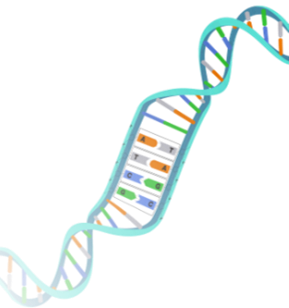<< Back to Water Quality main page

How DOEE is Working toward a Swimmable DC
Due to a lengthy history of pollution and environmental degradation, swimming has been banned in the District’s rivers and streams for over 50 years. However, major investments in wastewater treatment, stormwater management, and watershed restoration have steadily improved the water quality in the District. Thanks to these improvements, DOEE is working to move “beyond the ban” and to create new opportunities for swimming in District waters. To achieve that goal, DOEE created a roadmap of steps and tasks and analyzed over 20 years of water quality data to better understand when and where it may be safe to swim.
History
On August 3, 1971, the District of Columbia’s City Council voted to prohibit water-contact sports in District water bodies. The then Mayor-Commissioner enacted the swimming ban on August 27. View the National Archives copy of the District’s original swim ban. At the time, the ban was necessary to prevent illness. High amounts of fecal bacteria from combined sewer overflows polluted the Potomac and Anacostia Rivers and Rock Creek. In addition to the swimming ban, there are other District regulations and federal codes that prohibit swimming in the District.
These are:
- 36 Code of Federal Regulations (CFR) 3.17
- 36 CFR 7.96(e)
- Chapter 11 (Water Quality Standards) of Title 21 (Water and Sanitation) of the District of Columbia Municipal Regulations (DCMR) – Subsection 1108.1
- Chapter 10 (Harbor and Boating Safety) of Title 19 (Amusement, Parks, and Recreation) of the DCMR – Subsections 1039.5 and 1039.10
The District and its residents have invested heavily in improving the health of the Potomac and Anacostia Rivers and their tributaries. Water quality is continually improving due to our collective efforts. DOEE recently analyzed bacterial water quality data and found that swimming (or any activity where whole-body contact is likely to happen, such as paddleboarding) is now sometimes safe in some locations (see the animation below for locations). Currently, all the rivers and streams in the District fail to meet the water quality standards all the time to safely allow swimming. DOEE hopes to develop a monitoring program that would better inform when and where safe swimming might be able to occur in the future.
The animation below illustrates how bacterial water quality varies over time and location. It includes all available data collected during the swimming season (May to September) from 2017 to 2022 and displays them in chronological order. Yellow points indicate samples that are lower than the single sample maximum water quality standard for E. coli (410 MPN). Red points indicate samples that exceeded this standard.
Monitoring and Predictive Modeling of Bacteria in the Anacostia
DOEE and USGS are working together on the Spatial/Temporal Forecasting of Bacteria Populations in the Anacostia River project. The projects is investigating E. coli’s relationship with other water quality parameters like turbidity, the amount of water that flows in a stream, and temperature. If there is a commonality between E. coli and these more easily measured parameters, then E. coli could be predicted via modeling more quickly and easily than through traditional analysis methods. That would make DOEE aware of unsafe water quality conditions more quickly and able to notify the public when the District’s rivers are unsafe for swimming, paddle boarding, and other water activities. Learn more by visiting USGS Urban Waters Federal Partnership Cooperative Matching Funds Projects.
Enterococci PCR Testing Pilot Study
Cultured analytical methods (where organisms are grown and counted) have been commonly used and are currently recommended by the Environmental Protection Agency (EPA) to estimate fecal indicator bacteria (FIB) concentrations. The FIB concentrations must be below a specific concentration or a water quality criterion for the waters to be considered safe for swimming. . These water quality criteria are legal and environmental requirements that must be met to allow for safe swimming (or other activities where whole-body contact is likely to happen) in the District’s waters.
The FIB culture-based methods are inexpensive but have long processing times of about 24 hours that make them ineffective for issuing swimming advisories, since water quality isn’t necessarily the same day to day. Rapid tests are another method to determine amounts of FIB in water. Rapid tests use specific sequences of DNA and extract, amplify, and quantify that bacterial DNA using polymerase chain reaction (PCR). These rapid tests take about 5 hours and can be done early in the morning before swimming areas open. PCR methods for FIB quantification are effective and are used across the US for issuing swim advisories.
DOEE can only use EPA-approved methodologies for analyzing its surface waters against their water quality criteria. There is currently no PCR method for E. coli, EPA-approved or not, but there is a PCR method for Enterococci that is EPA-approved. DOEE currently uses the culture-based method for E. coli, as that is still the EPA-approved methodology that is available to DOEE. In the hopes of shortening the time it takes to get results on bacteria concentrations in District waters, DOEE is piloting a study to answer if the Enterococci PCR method has a correlation to E. coli culture-based method and, therefore, if the Enterococci PCR method is appropriate for gauging the risk of illness from swimming in the Potomac and Anacostia Rivers.
Microbial Source Tracking
 Another DOEE monitoring project is microbial source tracking (MST), which allows scientists to identify the source of bacterial pollution by looking at the bacteria’s DNA. DOEE partnered with Virginia Tech and EPA’s Office of Research and Development to perform MST studies in the Rock Creek and the Anacostia watersheds. They have identified both human and non-human sources (dog, deer, bird) of bacteria in District waterbodies. Knowledge about where bacterial pollution is coming from can help DOEE target clean-up efforts. For example, a spot that has a lot of bacterial pollution from dogs might benefit from clean-up efforts that are focused on working with the neighborhoods on pet waste cleanup and its importance. Human sources of bacteria are largely due to combined sewer overflows. Review the Anacostia MST study results at Genetic Fecal Source Identification in Urban Streams Impacted by Municipal Separate Storm Sewer System Discharges. Review Rock Creek’s study findings at Microbial Source Tracking for Rock Creek in Washington DC.
Another DOEE monitoring project is microbial source tracking (MST), which allows scientists to identify the source of bacterial pollution by looking at the bacteria’s DNA. DOEE partnered with Virginia Tech and EPA’s Office of Research and Development to perform MST studies in the Rock Creek and the Anacostia watersheds. They have identified both human and non-human sources (dog, deer, bird) of bacteria in District waterbodies. Knowledge about where bacterial pollution is coming from can help DOEE target clean-up efforts. For example, a spot that has a lot of bacterial pollution from dogs might benefit from clean-up efforts that are focused on working with the neighborhoods on pet waste cleanup and its importance. Human sources of bacteria are largely due to combined sewer overflows. Review the Anacostia MST study results at Genetic Fecal Source Identification in Urban Streams Impacted by Municipal Separate Storm Sewer System Discharges. Review Rock Creek’s study findings at Microbial Source Tracking for Rock Creek in Washington DC.
Modeling Bacteria in the District’s Waters
DOEE and USGS are working together on the Spatial/Temporal Forecasting of Bacteria Populations in the Anacostia River project. The projects is investigating E. coli’s relationship with other water quality parameters like turbidity, the amount of water that flows in a stream, and temperature. If there is a commonality between E. coli and these more easily measured parameters, then E. coli could be predicted via modeling more quickly and easily than through traditional analysis methods. That would make DOEE aware of unsafe water quality conditions more quickly and able to notify the public when the District’s rivers are unsafe for swimming, paddle boarding, and other water activities. Learn more by visiting USGS Urban Waters Federal Partnership Cooperative Matching Funds Projects.
Ambient Monitoring
DOEE also has a year-round monitoring program that collects water body samples and analyzes them. We use that data to determine if our waters meet or exceed the water quality criteria. DOEE can also use these data to determine when and where swimming in the Anacostia and Potomac Rivers may be safe. Review DOEE’s monitoring data and learn more about the District’s water bodies and DOEE’s efforts to protect them by looking at the Integrated Report.
Citizen Science for Water Quality
DOEE worked with Anacostia Riverkeeper to create a citizen science project and currently works with the Alliance for the Chesapeake Bay to train volunteers so they can monitor all the District’s waters across the Potomac River watershed, the Rock Creek watershed, and the Anacostia watershed. Learn more about Citizen Science for Water Quality.
DOEE also partners with the Potomac Riverkeeper Network and the Anacostia Riverkeeper on water quality monitoring. Learn more about their programs at Potomac Riverkeeper Network and Anacostia Riverkeeper. Review the Citizen Science data.
Special Swim Event
DOEE can legally allow Special Swim Events, a permitted exemption from the swimming ban, if monitoring proves the water quality conditions are safe enough. For more information, visit How to Obtain Approval of a Swim Event in the Potomac and Anacostia Rivers for details.
Swimming in the Media
- Time To Lift The Ban On Swimming In The Potomac And Anacostia Rivers, Advocates Say
- Lorde Becomes Accidently Ambassador for Swimming in the Potomac River
- Meet the People Who Actually Enjoy Swimming in the Potomac
- Swimming in the Tidal Basin
- How African Americans beat one of the most racist institutions: The swimming pool
- Water Quality Data Shows Where Swimming Beaches Could be in DC Rivers
DC Water’s Clean Rivers Project
Learn more about DC Water’s tunnel projects that reduce bacterial pollution in the District’s water at Clean Rivers Project.
Watershed Protection Projects
DOEE is implementing projects that protect rivers and streams before more pollution gets into them like RiverSmart programs and low impact development projects, while also restoring sections of the District’s streams. Learn more at Watershed Protection.
Anacostia River Projects
Learn more about the different types of activities occurring in the Anacostia River and its watershed like the Anacostia River Sediment Project, information on Kingman and Heritage Islands, and enjoying the Anacostia at Restoring the Anacostia River.
Trash Free DC
Visit Trash Free DC to learn more about how trash and litter harm our streams.
For questions, please contact [email protected].

